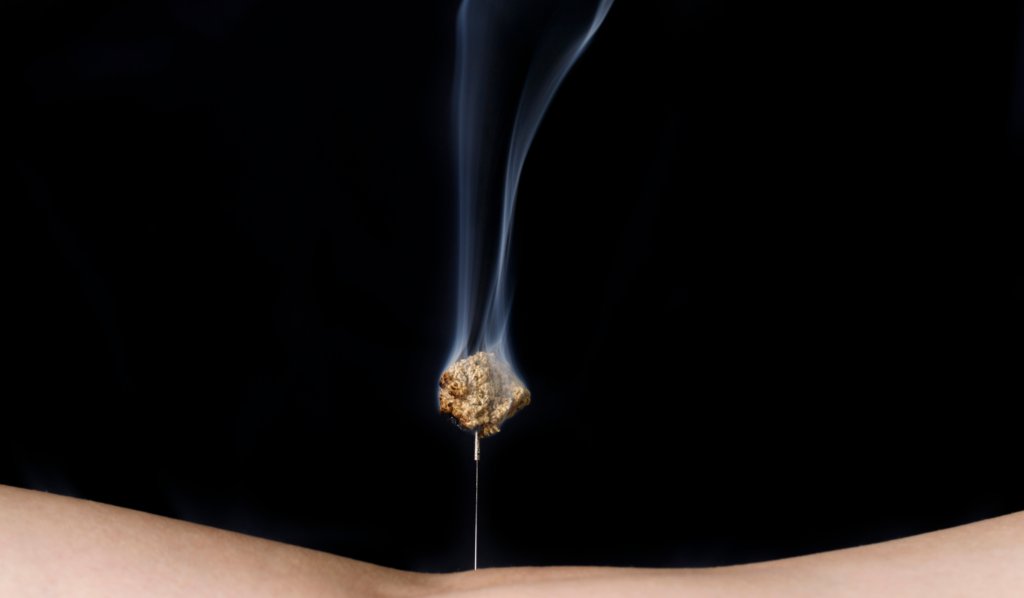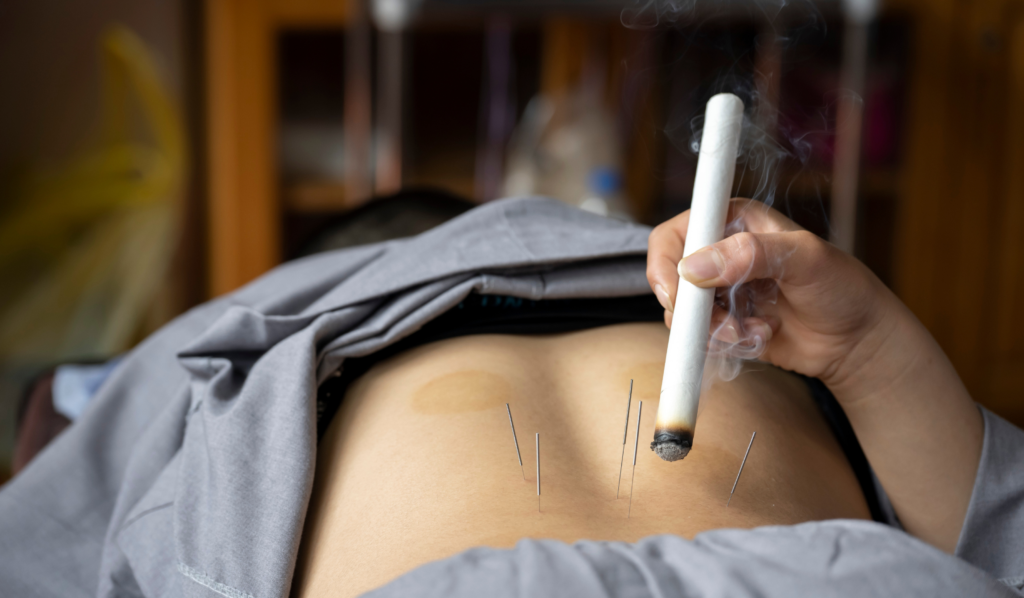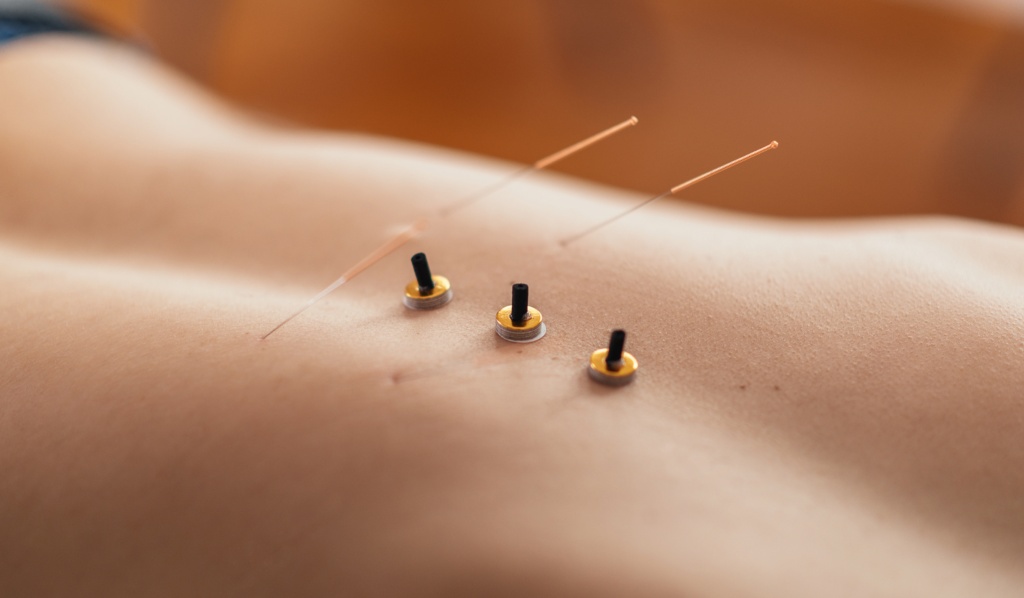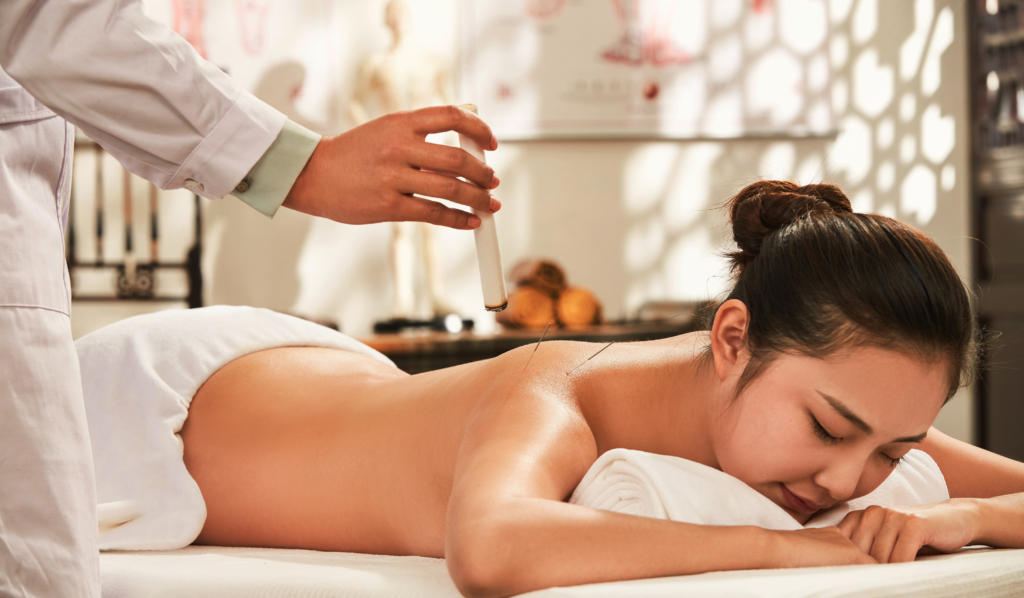Exploring Moxibustion in Acupuncture: Benefits, Uses, and What to Expect
When the body feels drained, cold to the core, or weighed down by chronic discomfort, many turn to acupuncture hoping to restore balance. But for cases involving deep energetic depletion or internal cold, needles alone may not provide the warmth the body craves. Moxibustion, a complementary technique rooted in Traditional Chinese Medicine (TCM), uses the warming power of mugwort to nourish and stimulate the body’s healing potential. Combined with acupuncture, it offers a more layered approach—reviving sluggish circulation, restoring depleted Qi, and creating lasting relief.
Unlike general warming therapies, moxibustion in acupuncture uses focused heat applied to specific acupuncture points. This technique is often included in treatments for fatigue, menstrual discomfort, digestive weakness, or cold-induced pain. Moxibustion and acupuncture work in tandem to not only relieve surface-level symptoms but also strengthen the body’s internal systems for long-term wellness. As interest in holistic care grows, this gentle yet powerful approach continues to offer deep support to those in search of balance and vitality.
Exploring Moxibustion in Acupuncture: Benefits, Uses, and What to Expect
When the body feels drained, cold to the core, or weighed down by chronic discomfort, many turn to acupuncture hoping to restore balance. But for cases involving deep energetic depletion or internal cold, needles alone may not provide the warmth the body craves. Moxibustion, a complementary technique rooted in Traditional Chinese Medicine (TCM), uses the warming power of mugwort to nourish and stimulate the body’s healing potential. Combined with acupuncture, it offers a more layered approach—reviving sluggish circulation, restoring depleted Qi, and creating lasting relief.
Unlike general warming therapies, moxibustion in acupuncture uses focused heat applied to specific acupuncture points. This technique is often included in treatments for fatigue, menstrual discomfort, digestive weakness, or cold-induced pain. Moxibustion and acupuncture work in tandem to not only relieve surface-level symptoms but also strengthen the body’s internal systems for long-term wellness. As interest in holistic care grows, this gentle yet powerful approach continues to offer deep support to those in search of balance and vitality.
Key Takeaways
- Moxibustion in acupuncture uses the warming power of mugwort to nourish and stimulate healing, especially in cases of internal cold and energetic depletion.
- Combined with acupuncture, moxibustion enhances circulation, boosts energy, and provides lasting relief from chronic pain, fatigue, and digestive issues.
- Therapeutic benefits of moxibustion include improved immune function, enhanced digestive health, and relief from reproductive and menstrual discomfort.
- Moxibustion’s warmth lingers in tissues, offering deep support for chronic conditions and accelerating recovery from stress, illness, and fatigue.
- Moxibustion is especially beneficial for individuals with cold-related symptoms, fatigue, low immunity, and digestive or reproductive issues.
Origins of Moxibustion in Acupuncture: How the Practices Came Together and Remain Common Today
The origins of moxibustion in acupuncture date back thousands of years to the earliest roots of Traditional Chinese Medicine (TCM). While acupuncture and moxibustion were initially developed as separate healing methods, they became closely intertwined as practitioners recognized the powerful synergy between them. Early Chinese healers discovered that applying heat to specific points on the body—especially with burning mugwort (Artemisia argyi)—could warm the meridians, stimulate circulation, and support healing. This technique, known as moxibustion, complemented acupuncture’s ability to move Qi and relieve blockages through fine needles.
By the time the Huangdi Neijing (Yellow Emperor’s Inner Canon) was compiled around 200 BCE, both acupuncture and moxibustion were described as core therapeutic tools. The text emphasized the importance of warming Yang, expelling cold, and regulating Qi—goals that were often best achieved through the combined use of needles and moxa. As TCM evolved, these two modalities became inseparable in many clinical traditions, especially for treating chronic or deficiency-based conditions.
Even today, moxibustion remains a common practice around the world. While not every session includes it, many practitioners use moxa regularly to enhance the effects of acupuncture, especially in cases involving fatigue, menstrual pain, digestive weakness, or cold-induced symptoms. In East Asian countries like China, Japan, and Korea, moxibustion is deeply embedded in medical practice, and its popularity continues to grow globally as more patients seek out holistic, warming therapies. The enduring presence of moxibustion in modern acupuncture reflects both its ancient origins and its continued relevance in supporting deep, restorative healing.
Why Moxibustion and Acupuncture Work Better Together
Moxibustion and acupuncture are often more effective when used in tandem because they address both the movement and the quality of Qi in the body. While acupuncture activates specific meridians and promotes energetic flow, moxibustion adds a warming, nourishing component that can restore vitality where energy is weak or cold has settled in. This combination strengthens therapeutic outcomes by targeting multiple layers of imbalance—surface-level stagnation, deeper constitutional deficiencies, and underlying pathogenic factors.
What makes this integration especially valuable is how each modality enhances the other’s effect. Acupuncture needles act like switches, activating the body’s internal response system. Moxibustion amplifies this response by increasing circulation, encouraging metabolic function, and delivering warmth where needed. For patients with Yang deficiency, low immunity, or poor digestion, the heat from moxa can penetrate deeper than needles alone, awakening systems that have become sluggish or depleted.
Additionally, moxibustion plays a unique role in reinforcing acupuncture’s effects between sessions. Because heat lingers in the tissues after application, it continues to support energetic flow and relaxation well after the treatment ends. This makes it especially helpful in chronic conditions, where sustained support is often necessary for long-term improvement.
Together, acupuncture and moxibustion offer a more complete and adaptive form of care—balancing stimulation with nourishment, precision with warmth, and short-term relief with long-term healing. Their combined use reflects a deeper philosophy in Traditional Chinese Medicine: that health is not just the absence of symptoms but the return to a harmonious and energetically aligned state.
Therapeutic Benefits of Moxibustion in Acupuncture
It strengthens outcomes for a wide range of health concerns—especially those linked to cold, stagnation, and deficiency patterns in Traditional Chinese Medicine (TCM).
Key benefits include:
Warming the Meridians and Enhancing Circulation
Moxa helps unblock areas where Qi and Blood have become stagnant, easing pain, reducing inflammation, and improving the flow of energy through the meridian system.
Strengthening Immune Function
By reinforcing the body’s Yang energy, moxibustion supports Wei Qi (defensive energy), helping protect against colds, infections, and seasonal imbalances—especially during colder months.
Improving Digestive Health
Moxa stimulates the Spleen and Stomach meridians, enhances digestive fire, and supports nutrient absorption. It can ease symptoms like bloating, poor appetite, cold limbs, and loose stools.
Supporting Reproductive and Menstrual Wellness
Moxibustion is commonly used to warm the uterus, ease menstrual cramps, regulate cycles, and support fertility treatments by improving uterine blood flow and hormonal balance.
Easing Chronic Fatigue and Emotional Exhaustion
The gentle heat of moxa calms the nervous system and nourishes depleted energy reserves, offering comfort and grounding for those experiencing burnout, anxiety, or chronic low energy.
Providing Long-Lasting Therapeutic Warmth
Unlike other heat therapies, the warmth from moxa continues to penetrate deeply even after treatment, extending the effects of acupuncture and offering sustained relief.
Moxibustion’s ability to target both physical and energetic imbalances makes it a highly valuable complement to acupuncture. When combined, these therapies offer a dynamic and holistic approach to healing from the inside out.
Common Conditions Treated with Moxibustion in Acupuncture
Moxibustion in acupuncture is often recommended when the diagnosis reveals patterns of cold, stagnation, or Yang deficiency. Common conditions treated include:
- Chronic joint pain, stiffness, or arthritis worsened by cold exposure
- Lower back pain or sciatica with cold sensations
- Menstrual irregularities, including delayed cycles, cramping, or amenorrhea
- Infertility or breech presentation (under proper supervision)
- Digestive complaints such as bloating, diarrhea, or poor appetite
- Cold limbs, fatigue, and generalized low energy
- Weak immunity or long recovery periods after viral illness or surgery
Each case is unique, and the use of moxibustion in acupuncture is carefully tailored to support the individual’s constitution and root imbalance.
What to Expect During a Moxibustion in Acupuncture Session
A typical session begins with a TCM consultation to assess tongue, pulse, symptoms, and underlying patterns. If your practitioner identifies a cold or deficient presentation, they may recommend moxibustion as part of your acupuncture treatment.
During the session, you’ll lie comfortably while acupuncture needles are inserted. The practitioner will then use indirect moxibustion—hovering a lit moxa stick above specific points to gently warm the area. In some cases, needle-top moxibustion may be used, where moxa is placed on the handle of the needle to transmit warmth deep into the meridian.
The experience is calming and non-invasive. Most patients feel a pleasant, penetrating warmth and leave the session feeling lighter, more energized, and internally balanced. The smell of mugwort may linger, but it’s often associated with calmness and comfort.
When Moxibustion Is Recommended in Acupuncture Treatments
Practitioners recommend moxibustion in acupuncture when:
- The patient has signs of cold invasion (chills, cold limbs, stiffness)
- There is a clear Yang deficiency (fatigue, low body temperature, slow metabolism)
- Symptoms align with Spleen or Kidney cold patterns, especially in digestive and reproductive cases
- Recovery from illness, postpartum depletion, or emotional burnout is the focus
- Immune regulation and preventive care are needed for those prone to catching colds
Your practitioner will determine if the body needs warmth, movement, or nourishment—and moxibustion is applied only when it supports that specific need.
Safety, Considerations, and When Moxibustion in Acupuncture Is Not Recommended
Moxibustion in acupuncture is safe when performed by licensed professionals. However, there are times when it may be inappropriate or require modification.
When to Avoid Moxibustion:
- Yin deficiency with heat signs (e.g., night sweats, dry mouth, red tongue)
- Inflamed, irritated, or broken skin at application sites
- Pregnancy, unless used under strict supervision (such as for breech correction
- Smoke sensitivity or asthma, in which case smokeless moxa or infrared heat may be used instead
A well-trained acupuncturist will always tailor the therapy to your current state, avoiding any unnecessary heat or stimulation when contraindicated.
Who Is Moxibustion in Acupuncture For?
This therapy is ideal for individuals who:
- Experience chronic cold in the body (cold feet, hands, low back)
- Struggle with fatigue, burnout, or weakened immunity
- Deal with reproductive challenges or painful menstrual cycles
- Seek support for digestive imbalance with sluggish symptoms
- Need recovery support after long periods of stress, illness, or overexertion
Whether you’re dealing with long-term fatigue or recurring cold-related symptoms, moxibustion in acupuncture can provide the warmth and nourishment your body has been missing.
What Science Says About Moxibustion in Acupuncture
Research exploring moxibustion in acupuncture highlights its physiological benefits as part of a combined therapy. One of the most well-documented effects is improved circulation. When moxa is applied during acupuncture sessions—either near needles or directly on them—it enhances local blood flow. This increased circulation helps reduce pain, ease muscular tension, and accelerate the healing of tissues. These effects are particularly relevant for conditions like arthritis, lower back pain, and stiffness made worse by cold environments.
Scientific studies also show that moxibustion in acupuncture may stimulate immune function. The targeted heat used in treatments can boost the activity of white blood cells and support the body’s natural defenses. In clinical settings, this makes it a valuable adjunct during seasonal transitions or recovery periods, especially for individuals with low immunity or chronic fatigue.
The technique also interacts with the nervous system. During acupuncture sessions, the addition of moxa’s warmth can activate sensory receptors that help regulate autonomic function. This promotes a parasympathetic (rest-and-repair) state, allowing the body to reduce stress hormone levels, support better sleep, and ease emotional imbalances. As a result, moxibustion in acupuncture is frequently used not only for physical conditions but also for emotional exhaustion, burnout, and anxiety.
By blending precise needle placement with warming moxa, this integrative approach supports both structural and energetic recovery—confirming through modern science what traditional medicine has long understood.
Restoring Warmth, Energy, and Balance with Moxibustion in Acupuncture
Moxibustion in acupuncture offers more than just temporary relief—it addresses the deeper imbalances that often underlie chronic discomfort, fatigue, and cold-related conditions. By combining the targeted stimulation of acupuncture with the nourishing heat of mugwort, this traditional therapy works to awaken the body’s healing capacity from within. It’s a practice rooted in centuries of wisdom, yet still profoundly relevant today as more people seek holistic solutions for long-term wellness.
At ACA Acupuncture and Wellness, our practitioners use moxibustion with care, precision, and a deep respect for your unique constitution. Whether you’re new to acupuncture or exploring options for chronic symptoms, this gentle yet powerful approach may be the key to restoring the internal warmth and vitality your body needs to thrive.
Sources:
Kim, S.-Y., Chae, Y., Lee, S. M., Lee, H., & Park, H.-J. (2011). The effectiveness of moxibustion: An overview during 10 years. Evidence-Based Complementary and Alternative Medicine
Deng, H., & Shen, X. (2013). The mechanism of moxibustion: Ancient theory and modern research. Evidence-Based Complementary and Alternative Medicine
Frequently Asked Questions
Does moxibustion hurt or burn the skin?
Moxibustion is designed to provide a gentle, warming sensation—not pain or discomfort. When used properly, the heat source never directly touches the skin, which helps prevent burns or irritation. The goal is to warm the meridians and stimulate Qi without causing harm. Most people describe the sensation as deeply soothing, with a comforting heat that penetrates into the muscles and joints. The warmth often lingers after the session ends, contributing to a lasting sense of relaxation.
How often should moxibustion be used for best results?
The ideal frequency depends on the nature of the symptoms being addressed. For acute issues like temporary digestive upset or cold sensitivity, a few sessions may be enough to restore balance. For chronic or long-standing conditions—such as fatigue, menstrual irregularities, or poor circulation—moxibustion may be used several times a week over a period of weeks. The goal is to build warmth and restore Qi steadily, allowing the body to regain function and energetic balance at a sustainable pace.
Are there specific areas of the body where moxibustion is most commonly applied?
Moxibustion is often used on acupuncture points located along the abdomen, lower back, knees, feet, and arms—areas associated with key meridians that regulate digestion, reproduction, and circulation. For example, it is commonly applied over the navel or lower abdomen to warm internal organs, or over the lower back to strengthen Kidney energy. The chosen points depend on the condition being treated, but in general, areas that tend to feel cold, tense, or weak respond particularly well to moxa’s warming influence.
Does moxibustion have long-term effects on energy levels or immunity?
Yes, many people who use moxibustion regularly report long-lasting improvements in energy, immunity, and emotional resilience. Because it works by tonifying Yang energy and supporting internal warmth, it helps strengthen the foundation of vitality over time. Rather than offering a quick fix, moxibustion builds deeper reserves, especially in people who feel run-down, cold, or emotionally drained. With consistent use, it may contribute to a greater sense of physical strength and internal stability.
Can moxibustion help with emotional well-being or mental clarity?
Yes, moxibustion is often used to support emotional health by reinforcing the body’s energy when it has been drained by stress or overwork. The warmth helps ease emotional heaviness and can calm overactive thoughts. Many people feel more centered, uplifted, and clear-headed after sessions—especially when dealing with fatigue, burnout, or emotional stagnation. The sensation of warmth itself can be deeply grounding, offering both physical relief and emotional support.
How do you prepare for a moxibustion session?
Preparation is simple. Wear comfortable, loose-fitting clothing that allows easy access to areas like the lower back, abdomen, or legs. It’s best to avoid heavy meals or stimulants like caffeine right before a session. Staying hydrated can also support circulation and help the body respond more effectively to heat. Most importantly, set aside time afterward to rest if possible—this helps the body fully absorb the warmth and energetic effects.
Contact ACA Acupuncture & Wellness
Get in Touch
Newsletter Sign Up
LOCATIONS
MANHATTAN
QUEENS
NEW JERSEY
CALIFORNIA
ACA Franchise Opportunities
The over $4 billion US acupuncture market offers a great opportunity with over 10% annual growth rates and a continuing flow of new patients interested in the benefits of acupuncture.




